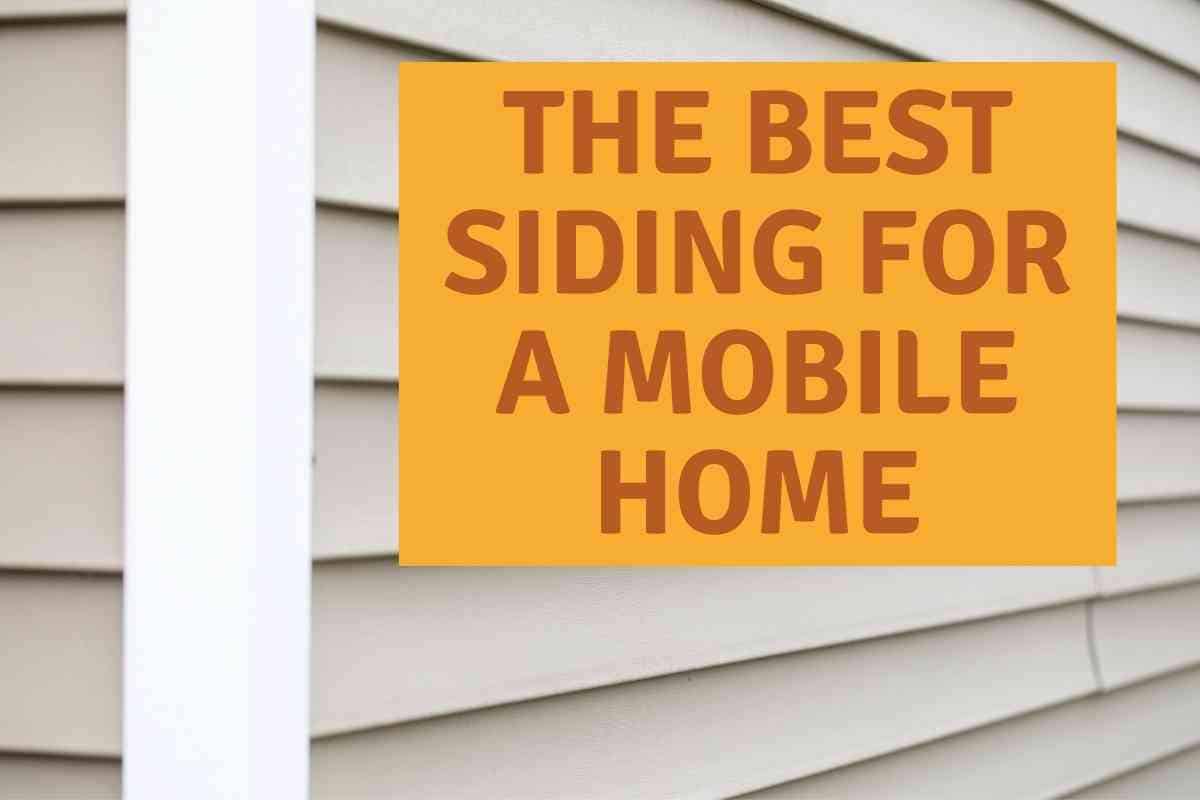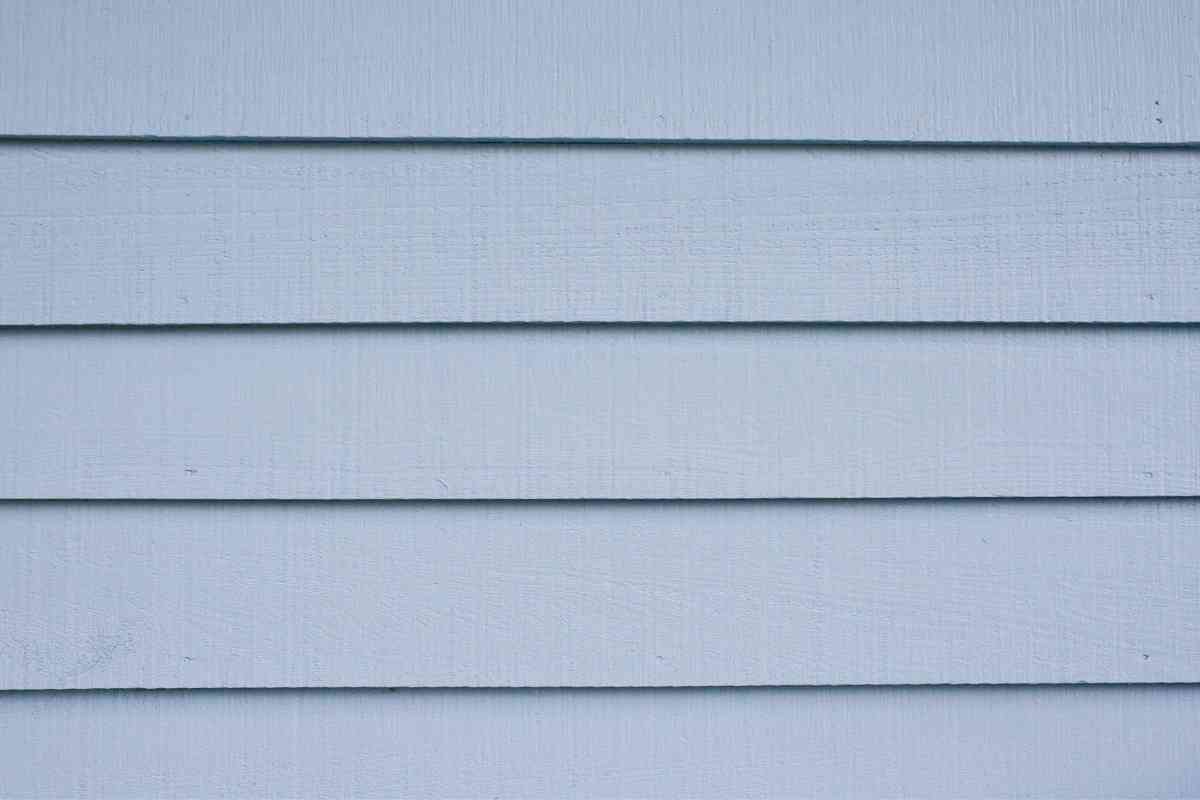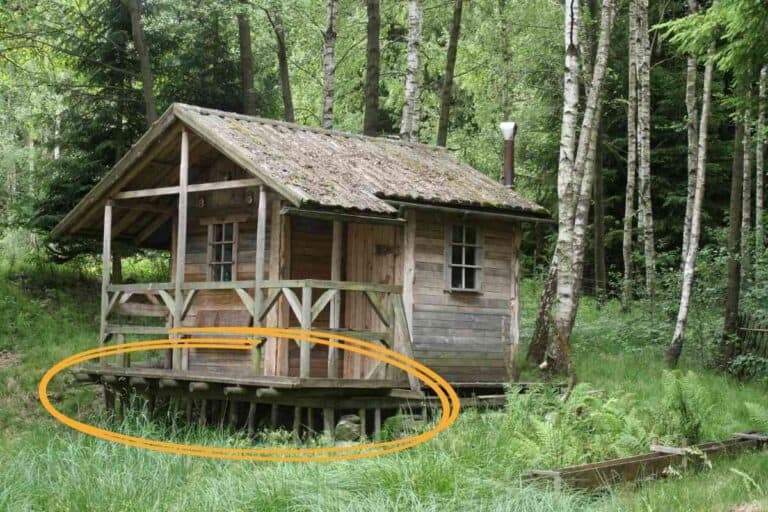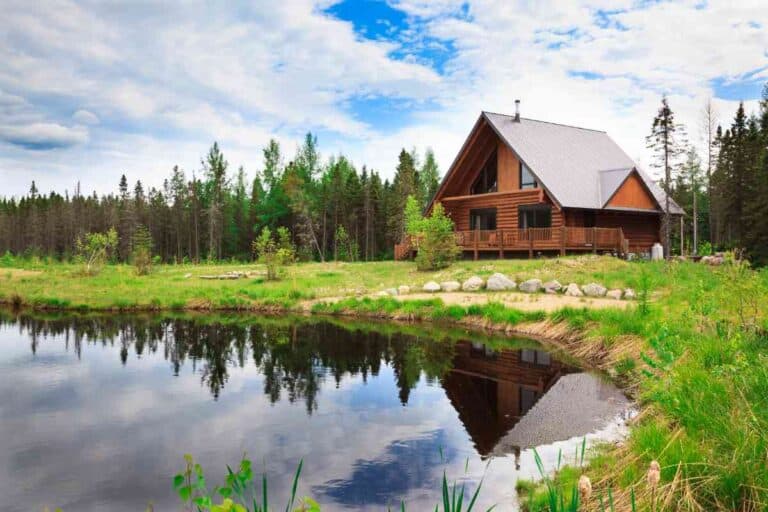The Best Siding For A Mobile Home: 5 Materials Compared
There are a lot of different types of siding materials out there, and it can be hard to decide which type of siding is the best for your mobile home. Replacing the siding on your mobile home is a big decision. Not only does it require time and money, but you also want to make sure you choose the right type of siding that will last for years.

What’s the best siding for a mobile home?
When it comes to mobile home siding, vinyl is the clear winner in terms of beauty, durability, and easy maintenance. Unlike other types of siding, vinyl will not fade in the sun or be damaged by wind or rain. Moreover, a simple hose down is all that is needed to remove dirt and grime.
If you are in the market for a new siding for your mobile home, you may be wondering what the best option is. There are many different types of siding available, and it can be difficult to decide which one is right for you. In this article, we will discuss the best types of siding for a mobile home and provide tips on how to choose the right one for your needs. So, whether you’re looking to update the look of your mobile home or you need to replace some damaged siding, read on for the information you need.
We spent countless hours researching the different types of siding materials available. We also consulted with mobile home experts to get their opinions on the best type of siding for a mobile home.
Why You Should Consider Replacing the Siding on Your Mobile Home
If your mobile home is starting to look a little dated or if you have damage to the existing siding, it may be time to consider replacing it. Not only can new siding give your home a fresh and updated look, but it can also improve its energy efficiency. In fact, according to the U.S. Department of Energy, updating your home’s siding is one of the most effective ways to improve its energy efficiency. If you’re not sure whether or not your home needs new siding, there are a few things you can look for:
Cracks Or Gaps In The Siding
If you notice any cracks or gaps in your mobile home’s siding, it’s a good idea to have them repaired as soon as possible. Not only can these problems let water and air into your home, but they can also lead to further damage down the road.
Missing Or Damaged Panels
If you have missing or damaged siding panels, it’s important to replace them as soon as possible. Not only will this help to protect your home from the elements, but it will also prevent any further damage from occurring.
Excessive Moisture In The Home
If you notice excessive moisture in your mobile home, it could be a sign that your siding is no longer doing its job. This is especially true if you notice mold or mildew growth on the walls or ceiling. If you suspect that your siding is to blame, it’s important to have it inspected by a professional as soon as possible.

Peeling Or Flaking Paint
If you notice that the paint on your mobile home’s siding is peeling or flaking, it’s a good idea to have it replaced. Not only will this improve the look of your home, but it will also help to protect it from the elements.
Types of Siding for Mobile Homes
Now that you know why you should replace the siding on your mobile home, it’s time to choose the right type of siding. There are many different options available, and the best type of siding for your home will depend on a variety of factors. These include your budget, the climate where you live, and the style of your home.
With so many options to choose from, it can be difficult to decide which one is right for you. To help narrow down your choices, here are some of the most popular types of siding for mobile homes:
Vinyl Siding
Vinyl siding is one of the most popular types of siding for mobile homes. It is made up of two layers, an outer layer of PVC and an inner layer of polystyrene foam. There are several reasons why vinyl siding is a good choice for mobile homes. First, it is very durable and can withstand the elements. Mobile homes are often exposed to wind, rain, and sun, and vinyl siding can stand up to all of these conditions.
Second, vinyl siding is easy to install. You can do it yourself or hire a professional to do it for you. Third, vinyl siding is low maintenance. It does not require painting or staining, and it is resistant to mold and mildew. Finally, vinyl siding is energy efficient. It will help keep your home cool in the summer and warm in the winter, which can save you money on your energy bills.
The cost of vinyl siding will vary depending on the size of your mobile home and the type of siding you choose. However, it is generally more affordable than other types of siding, such as wood or aluminum. Generally speaking, vinyl siding will cost between $0.7 and $6 per square foot. Vinyl siding is an investment that will pay off in the long run because it is durable, low-maintenance, and energy-efficient.
To care for your vinyl siding, you will need to wash it periodically with a mild soap and water solution.
You can do this with a garden hose or a pressure washer. Be sure to rinse the siding well after washing it so that no soap residue is left behind. You should also inspect your siding regularly for any cracks or holes. If you notice any damage, you can repair it with a vinyl siding patch kit
How To Install Vinyl Siding
Installing vinyl siding is a relatively simple process. First, you will need to remove the old siding from your mobile home.
Next, you will need to install furring strips, which are narrow pieces of wood that provide a surface for the vinyl siding to attach to. Once the furring strips are in place, you can begin attaching the vinyl siding.
Start at the bottom of the wall and work your way up. Make sure that each piece of siding is level and flush with the one next to it. When you reach the top of the wall, you will need to install a cap piece to finish off the installation.
Is Insulated Vinyl Siding Worth The Cost?
Insulated vinyl siding is a type of siding that has an additional layer of insulation. This makes it more energy-efficient than regular vinyl siding.
While it does cost more ($2-$8 per square foot) than traditional vinyl siding, many homeowners feel that it is worth the investment. If you live in an area with extreme temperatures, insulated vinyl siding can help to keep your home more comfortable year-round. It is also low maintenance and easy to clean, which is an important consideration for busy homeowners. When making a decision about siding, be sure to weigh all of the factors involved in order to choose the best option for your home.
Wood Siding
Wood siding is another popular choice for mobile homes. It is available in a variety of styles, such as shingles, shakes, and boards. Wood siding is a good choice for those who want a natural look for their home. It is also relatively easy to install and can be painted or stained to match the exterior of your home.
The main downside to wood siding is that it requires more maintenance than other types of siding. You will need to paint or stain it every few years to protect it from the elements. Wood siding is also susceptible to rot and insect damage. If you live in an area with high winds, wood siding may not be the best choice for you because it can be blown off of your home in severe weather.
The cost of wood siding varies depending on the type of wood that you choose. Cedar and redwood are more expensive than other types of wood, but they will last longer. You can also paint or stain your wood siding to change the color if you want to
If you are hiring a professional to install your wood siding, make sure that you get a few estimates before choosing a contractor.
There are many different types of wood siding that you can choose from, and each type has its own unique benefits. Some of the most popular types of wood siding include:
Cedar Siding: Cedar is a popular choice for wood siding because it is durable and rot-resistant. Cedar siding can last up to 30 years with proper care, making it a great investment for your home.
Cedar is also a beautiful wood that will add curb appeal to your home. The natural colors of cedar range from light tan to reddish-brown, and the grain is fine and even. Cedar siding is also easy to maintain. It can be cleaned with a power washer or simply hosed down, and it does not require painting or staining. If you are looking for a durable, low-maintenance material for your home’s exterior, cedar siding is an excellent option.
Redwood Siding: Redwood is one of the most popular choices for rot-resistant wood siding. It has a deep, rich color that creates a luxurious look for any home. Redwood is also extremely durable, making it an ideal choice for homes in areas with high winds or heavy rains.
In addition, redwood is easy to maintain and can be stained or painted to match any home’s exterior. While it is more expensive than some other types of wood siding, the increased durability and beauty of redwood make it well worth the investment.
T1-11 Siding: T11-11 siding is a type of plywood that is used for exterior siding. It is made of several layers of wood that are glued together and then covered with a layer of waterproof resin. T11-11 siding is very durable and can last for several years with proper care.
It is also easy to install and maintain, making it a popular choice for busy homeowners. The main downside to T11-11 siding is that it does not have the same curb appeal as other types of wood siding.
How To Install Wood Siding
Installing wood siding is a relatively simple do-it-yourself project. The first step is to measure the area where you will be installing the siding. Then, cut the siding to size and nail it into place. Be sure to use galvanized nails, as they will not rust over time. Once all of the pieces are in place, caulk any gaps and paint or stain the siding to match your home’s exterior.
Faux Stone Siding
Faux stone siding is a popular home improvement choice because it offers the look of real stone at a fraction of the price. Unlike natural stone, which is often difficult to obtain and install, faux stone is readily available and relatively easy to install. Faux stone is also much lighter than real stone, making it easier to work with and less likely to cause structural damage to your home.
However, faux stone does have some drawbacks. It is not as durable as real stone, and it can be susceptible to staining or fading over time.
In addition, faux stone does not have the same thermal properties as real stone, so it may not provide as much insulation for your home. Overall, faux stone siding is a great choice for those who want the look of real stone without the hassle or expense.
Faux stone siding is a low-maintenance option, but there are a few things you can do to keep it looking its best. First, occasionally inspect the siding for any loose panels or seams. If you find any damage, simply remove the damaged piece and replace it with a new one.
In addition, it’s a good idea to clean your siding on a regular basis to prevent dirt and grime from building up. You can use a hose or pressure washer to remove any debris, but be sure not to use too much pressure, as this could damage the stone. For tougher stains, you may need to use a mild detergent and scrub brush.
Faux stone siding can range in price from $12 to $30 per square foot, depending on the type of stone and the quality of the product. For a typical home, expect to pay between $500 and $3000 for faux stone siding. This is a much more affordable option than real stone siding, which can cost upwards of $50 per square foot. Faux stone siding has a warranty of 20 to 30 years, so you can be confident that it will last for many years to come.
How To Install Faux Stone Siding
Installing faux stone siding is a relatively easy process that can be completed by most do-it-yourselfers. The first step is to measure the area where you want to install the siding and purchase enough material to cover that area. Next, use a level to mark out where the bottom of the siding will sit.
Once you have your marks, begin attaching the panels to the house using construction adhesive or screws. Be sure to start at the bottom and work your way up so that any seams are hidden by subsequent rows of stone. When you reach the top of the wall, use trim pieces to finish off the edges and give your home a polished look.
Fiber Cement Siding
Fiber cement is another good choice for mobile home siding. It is made from a mix of cement, sand, and wood fiber, and it is designed to look like natural wood siding. It can be painted or stained to match the exterior of your mobile home.
In addition, fiber cement siding is resistant to fire, mold, and insects, making it a very safe option for homes.
However, one downside of this siding is that it can be difficult to install. The material is very heavy and brittle, so it requires special tools and techniques to properly install. Nonetheless, many homeowners believe that the benefits of fiber cement siding outweigh the drawbacks, and the siding remains a popular choice for mobile homes.
How To Install Fiber Cement Siding
Fiber cement siding must be installed by a professional due to its weight and difficulty. The first step is to measure the area where you want to install the siding and purchase enough material to cover that area. Once you have your material, a contractor will install furring strips on the outside of your mobile home.
These strips provide a stable surface for the siding panels to be attached. Next, the contractor will cut the fiber cement panels to size and attach them to the furring strips using screws or nails. Finally, they will seal any seams or joints with caulk or other materials to prevent water damage.
Metal Siding
Metal siding is a popular choice for mobile homes due to its durability and low maintenance requirements. The siding is available in a variety of metals, including aluminum, steel, and copper.
Metal siding is also available in a variety of colors and styles, so you can find an option that will complement the look of your home. One downside of metal siding is that it can be dented or scratched more easily than other materials. However, most damage can be repaired easily with a little elbow grease.
How To Install Metal Siding
Installing metal siding on a mobile home is a relatively easy task that can be completed on a weekend. The first step is to measure the area where the siding will be installed and then cut the panels to size.
Next, you will need to install furring strips around the perimeter of the area to provide a surface for the panels to adhere to. Once the furring strips are in place, you can begin installing the panels by attaching them to the furring strips with screws or nails. Finally, you will need to install trim around the edges of the metal siding to give it a finished look.






